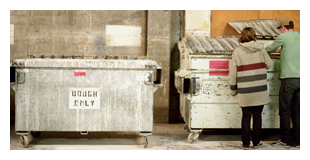Featured Indicators
 Freeganism
It used to be that anything in the garbage was, well, kind of gross. And to a huge swath of the Amer...
Freeganism
It used to be that anything in the garbage was, well, kind of gross. And to a huge swath of the Amer...
 Urban agriculture
A vacant lot blooms with edible wildflowers. A community garden teems with people on a Sunday aftern...
Urban agriculture
A vacant lot blooms with edible wildflowers. A community garden teems with people on a Sunday aftern...
Cultural Indicator
Backyard livestock

Checklist for an enviable backyard: A sparking turquoise kidney-shaped pool with a waterfall feature. A 38,000 BTU Weber grill the size of a small car. A kids’ playset pimped out with a rock-climbing wall and winding tunnel slides. And a chicken coop?
Keeping up with the Joneses has taken on an entirely new dimension, as people have upped the ante by going back to basics. Hand-in-hand with the resurgence in urban agriculture is the micro-livestock revival. In urban and suburban yards across the country, people are installing chicken coops, beehives, pens for goats and pigs and even cows.
This is rarely an economic decision. When the Eglu — a stylin’ chicken coop resembling an early noughties iMac, and perfectly sized for your Williamsburg balcony — was released in 2004, it was clear that the value proposition was not strictly about saving a few dollars on groceries. Eight years later, with the launch of Williams Sonoma’s new mainstream-friendly “agrarian” line, which sells luxury chicken coops, beehives, canning supplies, and other items that would make any woman who still owns a copy of The Feminine Mystique weep, it’s even clearer that this homesteading revival has little to do with frugality and everything to do with reclaiming something we’ve lost. The new homesteading movement has burgeoned in the intervening years, and shows no signs of slowing down. Classes that teach these lost skills are filled to capacity, new urban/suburban farming stores are thriving, and people who would’ve scoffed at such a lifestyle in the 1980s are now spending hours every day online discussing the nuances of chicken care.
This will be an interesting indicator to watch as the years unfold, because we are also living in a time of high poverty and unemployment, and these activities have enormous potential to go beyond the symbolism of self-sufficiency, towards the tools of a more sustainable life.
© egg, 2012. Excerpt from upcoming book by Hilary Bromberg, The Birth of Neonaturism.